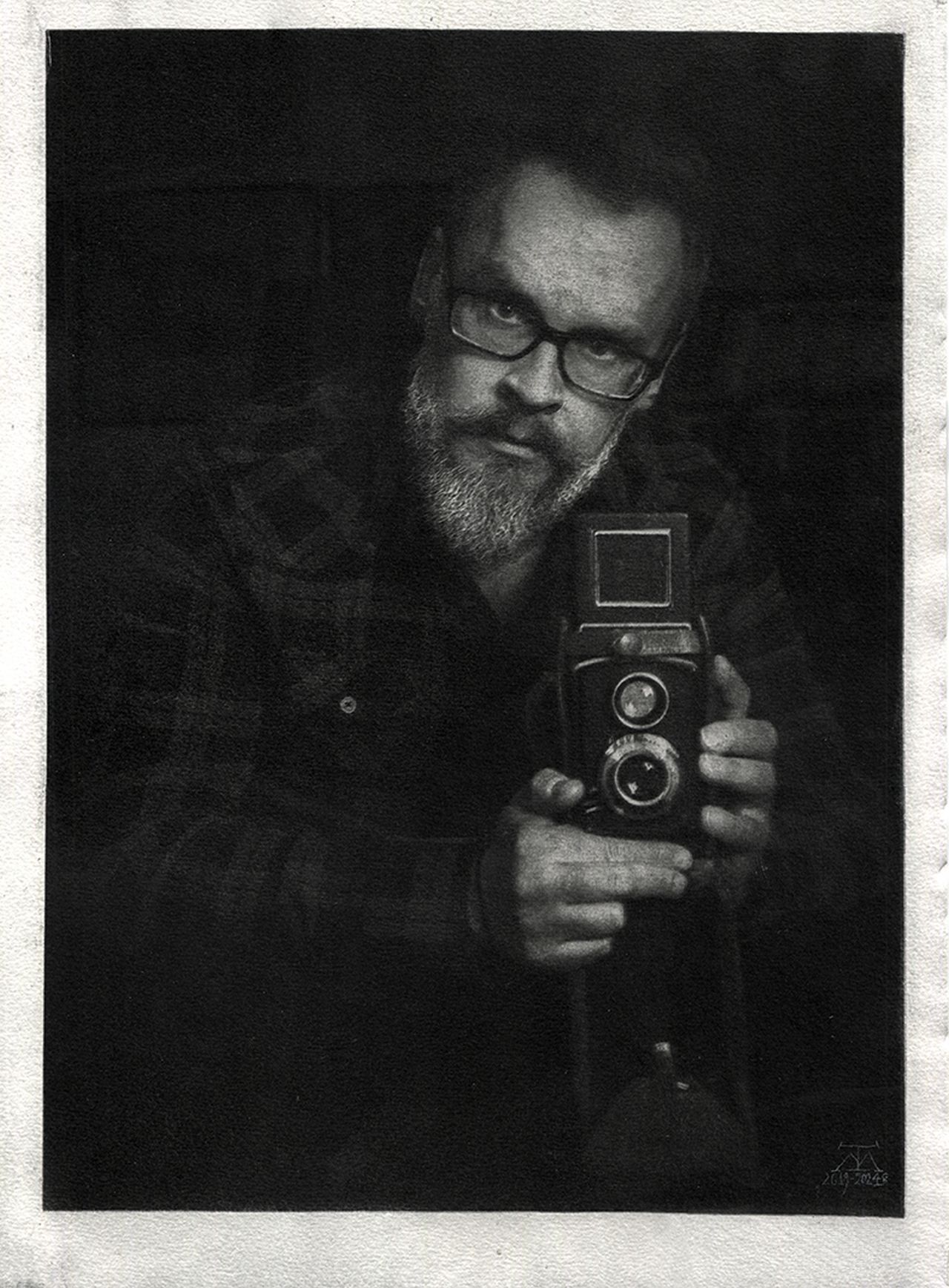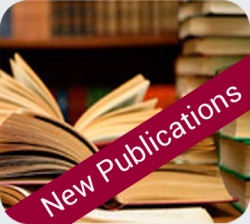This year the Mount Athos Center is once again participating in the events of the ‘Devotional Week’ festival organised by the Municipality of Thessaloniki by staging a photography exhibition entitled ‘The Scene of the Unseen: Mount Athos by Tomasz Mościcki’.
The exhibition will be officially opened on Tuesday 8 April, at 18.30, by the Mayor of Thessaloniki and President of the Board of Directors of the Mount Athos Center, Mr. Stelios Angeloudis.
The exhibition will be officially opened on Tuesday 8 April, at 18.30, by the Mayor of Thessaloniki and President of the Board of Directors of the Mount Athos Center, Mr. Stelios Angeloudis.
 |
The exhibition is divided into two parts: the first presents original works by Tomasz Mościcki which have been produced over the last twenty years, in numbered editions, and which make use of the historic photographic techniques of gum bichromate and silver gelatin printing. The second part presents, in digital form, a photographic record of the services and rite of Great (Holy) Week and the Resurrection, and the processions of sacred monastery icons, the most important being those of the ‘Axion Estin’ icon of the Mother of God on Easter Monday and the ‘Panagia Portaitissa’ icon of Iveron Monastery on Easter Tuesday.
View the embedded image gallery online at:
https://www.agioritikiestia.gr/en/photography-exhibition-the-scene-of-the-unseen-mount-athos-by-tomasz-moscicki#sigProId143b7d69b7
https://www.agioritikiestia.gr/en/photography-exhibition-the-scene-of-the-unseen-mount-athos-by-tomasz-moscicki#sigProId143b7d69b7
View the embedded image gallery online at:
https://www.agioritikiestia.gr/en/photography-exhibition-the-scene-of-the-unseen-mount-athos-by-tomasz-moscicki#sigProId41e8b65fed
https://www.agioritikiestia.gr/en/photography-exhibition-the-scene-of-the-unseen-mount-athos-by-tomasz-moscicki#sigProId41e8b65fed
Throughout the course of the exhibition, a documentary will also be screened featuring the photographer talking about his experiences of visiting the Holy Mountain and the special historic techniques he works with.
View the embedded image gallery online at:
https://www.agioritikiestia.gr/en/photography-exhibition-the-scene-of-the-unseen-mount-athos-by-tomasz-moscicki#sigProIde22ec00a17
https://www.agioritikiestia.gr/en/photography-exhibition-the-scene-of-the-unseen-mount-athos-by-tomasz-moscicki#sigProIde22ec00a17
The following passages about Tomasz Mościcki and his work are from the texts written by the exhibition curators:
A theatre critic and historian, as well as a producer of radio programmes, for over twenty years now Tomasz Mościcki has been producing a distinctive and highly idiosyncratic type of photography that combines an inwardness with a sense of devotion and aesthetic consistency. His work, which is imbued with a profound and austere personal aesthetic, is rooted in a place which embodies silence, spiritual ‘elevation’ and eternity: Mount Athos.
…..
The Pictorialists were not merely craftsmen but real artists who developed complex and time-consuming techniques, such as the gum bichromate process and carbon and bromoil printing, which required manual skill and an almost spiritual devotion. Their relationship with the materials they used and their sense of mystery underpinned their artistic vision for the photographic medium: they were not so much interested in depicting subjects as in producing effects.
Tomasz Mościcki’s work consciously forms part of this tradition, and the photographer can be regarded as a modern heir of Pictorialism, although he operates in a completely different environment: that of the 21st century, inundated with digital images, direct filters and, now, visual creations produced by artificial intelligence. Where modern technology promises images that are ever clearer and sharper and can be more easily processed, Mościcki opts for slow, fragile and random processes. His manual approach, which focuses on the gum bichromate technique, represents a conscious rejection of the standardisation of modern photography. It does not seek to produce but to reveal.
……
The part of his photographic work which is devoted to Mount Athos – the result of regular visits to the monastic state over a period of more than twenty years – is proof of this approach. The place, which lies outside time, favours this thoughtful aesthetic, in which every image becomes a silent image-symbol. The rugged scenery, the Byzantine architecture, the ascetic faces of the monks, are captured in a gentle light, as if emerging from the veil of memory. Mościcki does not record: he interprets and develops an intimacy with everything he photographs. He reveals to us an invisible presence, a spiritual weight that cannot be conveyed by the modern lens.
……
Mościcki’s gaze is also the gaze of a man of the theatre. This theatrical sensitivity is expressed in the way he composes his images, in the way he arranges figures and the light.
……
The part of his photographic work which is devoted to Mount Athos – the result of regular visits to the monastic state over a period of more than twenty years – is proof of this approach. The place, which lies outside time, favours this thoughtful aesthetic, in which every image becomes a silent image-symbol. The rugged scenery, the Byzantine architecture, the ascetic faces of the monks, are captured in a gentle light, as if emerging from the veil of memory. Mościcki does not record: he interprets and develops an intimacy with everything he photographs. He reveals to us an invisible presence, a spiritual weight that cannot be conveyed by the modern lens.
……
Mościcki’s gaze is also the gaze of a man of the theatre. This theatrical sensitivity is expressed in the way he composes his images, in the way he arranges figures and the light.
Vangelis Ioakeimidis, curator of exhibitions and publications
«Photography, this language of images, appropriates unfamiliar impressions in order to express familiar emotions. And why should emotions be expressed? Because, like introspection, it is a safe way for people to understand emotions, both their own and those of others. This is the most profound justification for the art of photography. It is a form of representing reality that is achieved by focusing on certain details and excluding others, a practice that photography, as a visual art, shares with drama, the theatre, as a performing art.
……
When I first saw Tomasz Mościcki’s photographs of Mount Athos I found myself immersed in this highly dreamy theatricality that springs from the depths of his carefully staged subject matter and pervades the surfaces of his photographs. Shortly afterwards we met in person and had the opportunity to hike along Athos’s paths together. I noticed how he was magnetised by the sight of a silent ruin, devoured by the riotous undergrowth along the old Vatopedan path on the slopes above Kapsala. I could see the fire in his eyes as he waited to grasp the particular shade of light that, passing through the restless foliage, would produce the effect he sought: that of the all-powerful law of decay which is so characteristic of his photographs.
……
When I first saw Tomasz Mościcki’s photographs of Mount Athos I found myself immersed in this highly dreamy theatricality that springs from the depths of his carefully staged subject matter and pervades the surfaces of his photographs. Shortly afterwards we met in person and had the opportunity to hike along Athos’s paths together. I noticed how he was magnetised by the sight of a silent ruin, devoured by the riotous undergrowth along the old Vatopedan path on the slopes above Kapsala. I could see the fire in his eyes as he waited to grasp the particular shade of light that, passing through the restless foliage, would produce the effect he sought: that of the all-powerful law of decay which is so characteristic of his photographs.
Phaedon Chatziantoniou, architect-restorer
 |
Tomasz Mościcki (b. 1965) – theatre critic, journalist, photographer, holder of a PhD in the humanities. Graduate of the Warsaw Academy of Theatre. Has distinguished himself in the fields of theatrical criticism and historiography, with publications in newspapers, journals and radio programmes. An author of six books on the history of Warsaw’s theatres, he has been awarded the Warsaw Prize for Literature and has been honoured by the University of Warsaw. |
| Since 1980 he has concerned himself with photography, with an emphasis on landscapes and urban transformations. He employs both traditional and digital techniques, and specialises in the 19th-century gum bichromate technique. His photographs have been exhibited both in Poland and abroad, including the USA, UK, France, Germany, Netherlands, Greece and Cyprus. Works of his are to be found in both private and public collections, including that of the Thessaloniki Museum of Photography. Gum bichromate prints of Mount Athos now form part of the collection of the National Library of Poland. A longtime member of the Association of Polish Art Photographers (ZPAF), his work has featured in about 40 exhibitions. His interest in Mount Athos led to a series of exhibitions in Warsaw, Nicosia, Strasbourg and various German cities. He has a special connection with the Orthodox community in Poland, and has produced photographs devoted to the theme of life in Orthodox monasteries and society, which have been widely exhibited and published. Mościcki is also concerned with the changes taking place in Poland’s industrial landscapes and infrastructure. His recent works focus on the construction of bridges, with important series of photographs from the regions of Stalowa Wola and Wizna. The works in this exhibition highlight his skill in the use of the gum bichromate technique, where tradition is combined with contemporary subject matter. The exhibition coincides with two important milestones: 30 years of his membership of ZPAF, and his 60th birthday, marking a remarkable career both in theatrical research and photography. |
Exhibition curators: Vangelis Ioakeimidis, curator of exhibitions and publications & Phaedon Chatziantoniou, architect-restorer.
Exhibition venue: Mount Athos Center (109 Egnatia St., Thessaloniki)
Duration of exhibition: 8 April – 7 June 2025.
Opening hours:
Monday & Wednesday 9:00 – 16:00
Tuesday, Thursday & Friday: 9:00 – 20:00
Saturday: 9:00 – 15:00
* Monday, Tuesday and Wednesday in Holy Week 9:00 – 20:00; Thursday in Holy Week 9:00 – 18:00
*Closed on Sundays, Good Friday, Easter Saturday and Easter Monday.
Admission free
109 Egnatia St., Thessaloniki / Tel. 2310263308
This email address is being protected from spambots. You need JavaScript enabled to view it. www.agioritikiestia.gr








